#Sunny wanted to be part of the photo group so changed her design for winter xd
Explore tagged Tumblr posts
Text

Group reference \(^ヮ^)/
#my art#sky children of the light#sky cotl#skykid#thatskygame#skykid oc#sky cotl fanart#fun fact Red always had ears he just doesnt like to be called cute bcs of it#Sunny wanted to be part of the photo group so changed her design for winter xd
24 notes
·
View notes
Photo
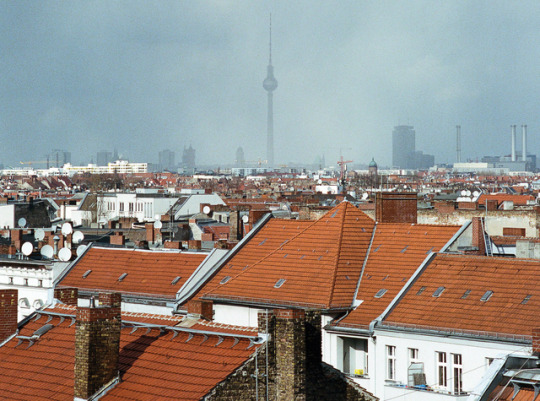
From Berlin with Love
Feel free to take your time, but make sure you stamp your ticket or beware the ticket collector’s unsympathetic wrath, representing just one side of the many sided Berlin. Berlin has a special, peculiar, and particular history, and although it’s described by countless guides as the design city of today, it’s always been a design conscious city. In the early 20th Century, it was the first place in Europe to slice ornaments from building facades in a committed embrace of streamlined modernism.
Much has changed across the city’s façade since, but underground on the U-bahn you can clearly observe the blended traces of Berlin’s design history: some stations are Art Nouveau and German Jugenstil in style, others Bauhaus, 70s futurism, or contemporary, pastel-colored minimalism. It’s been nearly 30 years since the fall of the wall and above ground any signs are mostly gone, but the Cold War era’s clash of opposites remains on the U-Bahn: austere Soviet designs adorn former Eastern stations, and elaborate floral motifs carved in stone are preserved in the former Western ones. The only period not present along the platforms is the Nazi era, when stations were used for bomb shelters. Then again, as you pass through the morose platform of Mohrenstraße, you might feel a little chill learning that the red marble encasing the platform is recycled from Hitler’s former Reich Chancellor Building.
Finding your way—way finding—in this design conscious city, with its design conscious subway, is no simple task, but the U-bahn’s network system, organized by the renowned German typographer Erik Spiekermann and his agency MetaDesgin since 1992, attempts to ease your way and get you to where you want to go. It’s a riot of colors, and a brew of squares, circles and pictograms: This noisy system inherits the chaos of 19 different S-Bahn and U-bahn lines. Berlin is not so much a city formed around a central core but a constellation of separate planets each with its own peculiar forms of life, abstractly linked together by the network of subway tracks.
Because it’s Spiekermann that first guides us through Berlin’s underground, our first stop will be Bhf Bülowstrasse, to take a stroll up Potsdamer Strasse to Spiekermann’s p98a gallery and letterpress workshop. The street was once the locus for the edgy ambiguities of 1920s Weimar cabaret culture and Marlene Dietrich androgyny; today, it houses galleries, non-descript office blocks, and one euro bargain stores, as well as a conspicuously slick Acne shop, and the workplaces of local design studios like the modern, sophisticated HelloMe and the riotous, ramshackle illustration duo 44Flavours. World’s apart in style, but neighbors here in Berlin, which loves to mix things up.
Spiekermann’s p98a is the area’s most popular destination for visiting designers, and plenty of agencies book master-classes in letterpress with this master designer. Glimpse through the window, and you might spy Spiekermann himself high fiving and punching the air with his fist: his old school “no-bullshit” attitude makes him the champion of many, and an irritation—the dad rock of design—to others.
A short walk away from this letterpress haven—or at U-Bahn station Nollendorfplatz—is the great Bauhaus Archive, perched above the canal like an impassive white wave rising from the water. Erected in the 70s, the museum’s architecture draws is loosely inspired by an archive conceived by Bauhaus founder and architect Walter Gropius in the 1960s. Inside, a study in patience and precision, hushed art historians and design researchers sit bent over books, and the permanent collection displays iconic relics from Germany’s early modern years: great weaves by textile artist Anni Albers, paintings by Paul Klee, steel armchairs by Marcel Breuer, and other objects of design from the 20s and 30s produced by the famed and influential Bauhaus school.
The Bauhaus Archive. Image by BBB3viz.
Close by, on the other side of the sprawling Tiergarten Park with its dense cluster of pine trees, sits Berlin’s Hansaviertel. If German’s cool modernism emerged from the Bauhaus in the 20s, then this neighborhood was one of modernism’s climaxes: the housing development was built after World War II in a derelict area, constructed as part of the International Building Exhibition of 1957. Along the leafy, quiet streets are batteries of tower blocks, ribbon buildings, two modernist churches, and a glass library, designed by the period’s most significant architects.
After a morning at Spiekermann’s p98a, it makes sense to visit the Hansalviertel not only to see this plastic clad “city of tomorrow” but to seek out the Buchstabenmusum (called the “Alphabet Museum” in English) situated quietly under the tracks of the over-ground station Bellevue. The first museum in the world to preserve and display letters from public spaces and provide information about their origin and construction, the Alphabet Museum was founded 11 years ago by graphic designer Barbara Dechant, who began collecting after she first rescued from a dumpster a car radio sign reading “A U T O R A D I O”. Hundreds of letters destined for scrap heaps have been salvaged and preserved in a dusty storage unit; there’s neon, metal, and wooden characters in a variety of styles and colors— amidst the letters and dirt, you can construct a story of Berlin and sense a few ghosts.
Back on the U-Bahn, following the many symbols devised by Spiekermann, head to the station Kottbusser Tor, in the Kreuzberg district, for lunch. This bucolic, graffitied neighborhood teems with bars, co-working hubs, dentists, falafel shops, gambling houses, fruit markets, ice cream shacks, as well as concept stores like the stylish fashion destination VooStore, and the chaotic zine shop Motto books, but walking along the area’s wide pavements, you can easily ignore how packed together everything is. There is a kind of discreet harmony to it all, as though it was always meant to be this way; Berlin as energy, and disguise.
The Kottbusser Tor transit stop and the market hall. Photos by Ina Niehoff.
From here, head towards Markethalle Neun, a market place or “culinary epicentre” situated under a large, broken roof and crammed with international food vendors advertising their fair on home-made posters and handsomely scribed blackboards. Today’s signs framing another Berlin: Cheese platters & Olives. Veggie Wurst. Craft beer. Kimchi Burgers. Ginger Lemonade. Freshly Baked Ciabatta.
This is a lunch spot for co-workers busying themselves behind the glass windows of storefronts, or trickling out from former factory buildings that have been converted into spacious offices. Spot a group of women who whimsically but provocatively call themselves “Parallel Universe” sat together in the market hall drinking ginger lemonade on a wooden picnic bench: this group of six female illustrators have gathered to swap advice on art directors—who pays on time, who is best to work with—and to collaborate on illustrations for an upcoming Antifa march. Since 2012, Cynthia Kittler, Kiikka Laakso, Kati Szilágyi, Laura Breiling, Ji Hyun Yu, and Barbara Ott have banded together to form this important all-female collective, using their social media platforms to promote and highlight one another’s output. Better together, stronger side by side. Another Berlin in motion, up-to-date, but part of its historic momentum.
Nearby, after sipping organic lemonade and planning with Parallel Universe, the Museum of Things. A small curiosity tucked above an art bookstore on Orienenstrasse, this collection of glass cabinets features simple, everyday but also marvelous things from the past and near present: every blue Nivea jar since the company first began, biscuit tins, plastic at the back of the museum as if it were no big deal at all—an original Frankfurter Kitchen, a milestone in domestic architecture that’s considered the forerunner of the modern fitted kitchen. All of this finds its home in Berlin, where the elsewhere, the other, the uncanny and the new, whether practical or impractical, always belongs.
The Museum of Things will inspire you make your own things, and luckily, there’s a place close by to help you. Towering above a roundabout near the U-Bahn station Moritzplatz sits the great Modular—the ultimate art supply store, artistically stacked with pens, markers, pexiglass, plywood, stationary, pompoms, and anything else that you’ll ever need to make any thing you’ve ever wanted to make, even objects from your dreams. The German designer and illustrator Sarah Illenberger is in Modular today, intently collecting bright colored supplies that she’ll use for her next still-life cover commission for ZEITmagazin. She and her intern pick up yellow paint and blue and pink cardboard, before heading outside to the community garden on the other side of the road, where they cut great leafs from bushes. Illenberger will paint these with geometric patterns and then photograph them against the bright card later today. Yes, signs of another Berlin.
Wherever you’re staying in Berlin—the boutique design hotel 25hours Bikini Berlin near Tierpark, a colorful and energetic hostel near Schlesische Tor U-bahn, or a relatively cheap Airbnb in the Neukölln district with tall windows, wooden floors and a sunny balcony—on your walks to and from the U-Bahn, you’ll notice the posters. Berlin is a city where posters really mean something to a neighbourhood: where people stop in the street to carefully write down the information on prints as if they were hung on a community billboard. Posters communicate what’s happening around the corner, maybe a new club night, an exhibition, or a vegan burger pop-up event. Posters wrap around street lamps layered over all old ones, becoming dense, ghostly rolls that echo event’s and fashion’s long lost—in winter, these rolls get heavy and wet, sliding down towards the pavement like pulp, only to get propped up again by kids on bicycles in the summer, who use glue trays slung over their shoulders and large brooms to slap up each month’s new run of prints. In 1855, the city began erecting rounded advertising columns on the street corners to house the continuous flux of new poster designs. If the U-bahn is Berlin’s design history, then these advertising columns—although built long ago—are home to the design of today. New Berlin constantly appears through its posters.
The Berlin poster is naturally an especially beloved medium for the city’s designers— it’s not simply a mundane advert that people indifferently stroll past but a vital activating communication tool necessary for navigating nightlife, the gallery scene, and local events. It’s why Berlin clubs, generating the city’s dancing heartbeat, invest so much in their creation: the fabled Berghain, which legend claims is the world’s best techno club with its weekly congregation of black clad regulars wearing BDSM studded collars and Adidas caps, plays careful attention to the design of its monthly fliers and listings. Each month’s new posters feature a dark and atmospheric slice of original artwork, articulating and amplifying the club’s mythical night-life pull. A call to action for the great Berlin night, where the city begins and ends.
Visiting Mitte, the central borough in Berlin. Photo by Ina Niehoff.
The walk back to the U-bahn, to start again after one of those nights, you’ll pass an advertising column featuring a particularly neat, eye-catching placard—the poised influence of Swiss design is unmistakable, and its gorgeous serif typography is paired with an elusive background image, hinting at yet another Berlin yet to come. It’s the work of graphic design studio NODE, based in Berlin and Oslo, Norway, an intellectual and meticulous studio whose considered and theoretical output is a hallmark of Berlin’s contemporary art world. On this modern poster, large letters read “HKW,” standing for the Haus der Kulturen der Welt, a conference hall and exhibition space that hosts art, culture, and design events. Depending on what month it is, perhaps the yearly Typo Berlin conference is taking place, or Transmediale, a cerebral technology and art festival. Berlin, where conferences never end.
HKW was constructed as part of the International Building Exhibition of 1957 project and resembles a bright orange oyster rising form the ground. An event titled Miss Read is typical of events held there; a busy art book and self-publishing fair that draws in book lovers from around the country. German publishers and independent magazine makers sit behind their make-shift stalls, showcasing intricately bound tomes, sleek poetry chapbooks, colorful manifestos, risograph comics, monographs with knitted covers, experimental type specimens, and endless other papery surprises. Berlin is made of paper as much as memory, metal, and concrete.
The magazines available at this crowded, popular event are similar to those you can purchase in a store in the Mitte district of the city, close to the Weinmeister U-bahn station, called Do You Read Me?! It’s niche assortment of magazines sit on minimal black shelving. There are magazines here for every mood and every taste: one for redheads, another for dog lovers, another for female soccer players, another that tells the history of a different street each issue, and also more enigmatic, challenging, consistently well-designed choices. Mitte is a tidy district, a place of cafes that serve impressive slabs of classic avocado toast and that’s home to ambitious start ups which dot the streets under the shadow of the TV tower’s vigilant orb. If there is a center to proudly centerless Berlin, then perhaps it’s Mitte, which literally means “center” and is, at least in the prosaic geographical sense, in the middle of the city. The tall office of Freunde von Freunden perches snuggly in one of the area’s clean streets; the ultimate go-to blog for motivated lifestyle dreamers, Freunde von Freunden records the energetic lives of Berlin’s creative scene with breezy, sophisticated photography. Berlin: always aware of itself, without giving too much away.
A swan chillaxing in Berlin. Photo by Ina Niehoff.
It’s while traversing the neat, methodical streets of Mitte (passing by the KW Institute of Contemporary Art, a four-story gallery with beautifully designed exhibition catalogues, and Viktor Leske, an avant-garde hair dressing salon where few leave without an undercut) that you stumble across the neat, methodical studio of international star illustrator Christoph Niemann. He works with his spectacles perched on his nose in his white and silver office behind a storefront’s glass window—a literal spectacle for passers-by; children press their faces up to the glass to watch him sketch. It’s so immaculately clean in his studio, a kind of comment on Berlin’s dirt, and he’s penning away on Post-It notes bought at Modular, devising a plan for his next New Yorker cover. From Berlin with love; design for the rest of the world.
After standing and watching, enthralled by process, by the materializing of yet more Berlin, you might then spot another poster, another message, and be directed somewhere else, somewhere new, the Berlin still being made, still being invented. Or you might dive back down into the U-bhan, taking refuge in the depths of history. Moving on, without rushing, because Berlin time takes its time, to another brunch, to a beer on the canal, to something crazy underground or enterprising on the streets—moving slowly, not quickly, surrounded by designs and designers, form and content, interpreting the language and style of Berlin, a city always becoming itself, where something new always seems to be starting.
2 notes
·
View notes
Text
Simone Haag’s Guide To Mount Buller + Mansfield
Simone Haag’s Guide To Mount Buller + Mansfield
Travel
Simone Haag
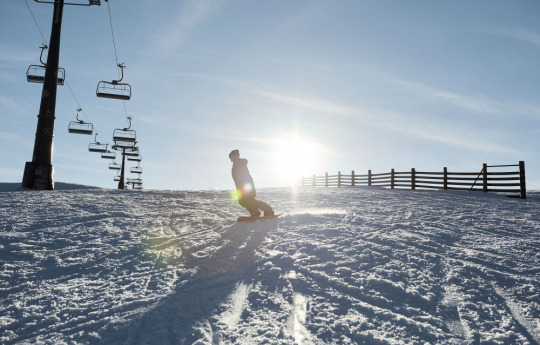
Simone on the Mount Buller slopes! Photo – Eve Wilson for The Design Files.
We weren’t a snow-going family when I was a kid – the one trip we went on gave the Griswolds a run for their money! I’m surprised I ever made it back there, but landing a job on Mt Buller in the early 2000s helped the cause, and I am so thankful for that.
From very humble beginnings at Mt Buller, I was lucky enough to go on to Heli-Board in Canada, and work for multiple seasons in Chamonix, France. But I will always see Mt Buller as my home mountain. I even met my husband there – he snowboarded professionally for five years and went on to coach for Team Buller. So it’s safe to say that I am now part of a snow family!
I feel that the Mansfield Mt Buller region demonstrates a slower pace of life – stopping to chat with people in the street; fresh air; warm fires; big coats and red wine. It is a base for so many activities and attracts all walks of life. There is always an event or festival going on! It’s a humble area, where it’s not uncommon to see a few horses tied up outside a pub whilst their owners are getting a parma.
My family is now in the process of designing and building a home at the base of Mt Buller, I’m so excited to create a base for our kids to learn to ski and to host friends and family. We live in the outer Eastern suburbs of Melbourne, so we’re already a quarter of the way to the region! My favourite part of the drive is when the snow-capped tip of the mountain comes into view for the first time. It’s pretty magical.
Being there reminds me of when I was an adventurous twenty-year-old – driving my red Ford Laser, listening to Chicane on the mini disc on repeat while learning to snowboard. It reminds me of finding love, hiking to the summit to watch the sunset, sliding down to the Kooroora hotel on a tray from the Abom canteen. But more than anything what I love about our time at Mount Buller is embracing something that unites friends and family in a spirited way, without devices and technology, with a long (ish) drive where we can sing loud and sleep soundly.
Today, I’m sharing with you some of my favourite places to stay, eat and shop in the Mt Buller / Mansfield region – just in time for the slopes to open on June 22nd!
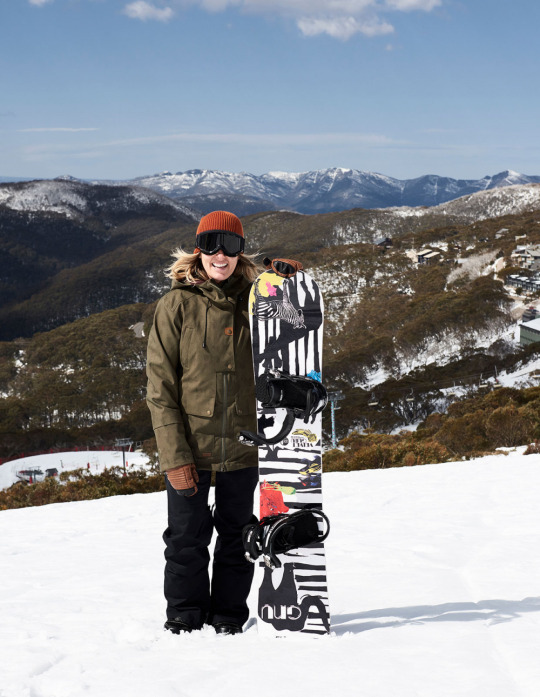
Simone spent a lot of her 20s snowboarding on Mount Buller and around the world! Photo – Eve Wilson for The Design Files.
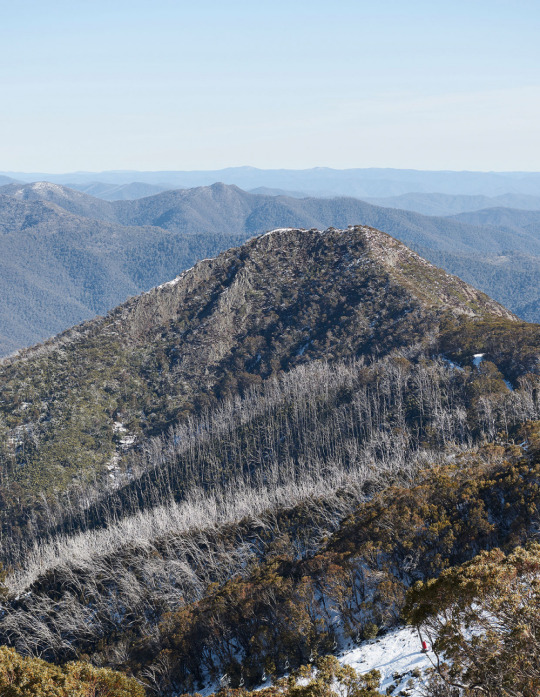
A beautiful mountain vista. Photo – Eve Wilson for The Design files.
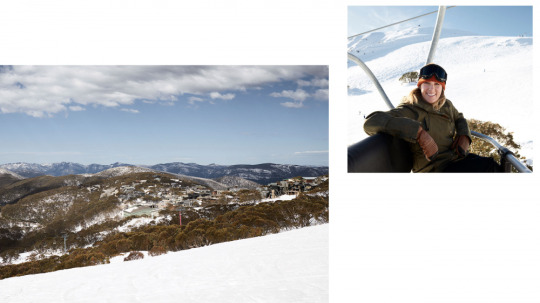
The 2020 Mount Buller season will be opening on June 22nd. Photo – Eve Wilson for The Design files.
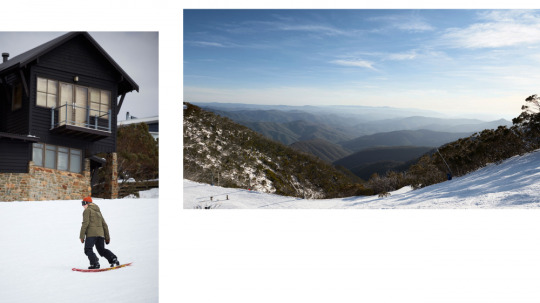
Simone on the slopes. Photo – Eve Wilson for The Design Files.
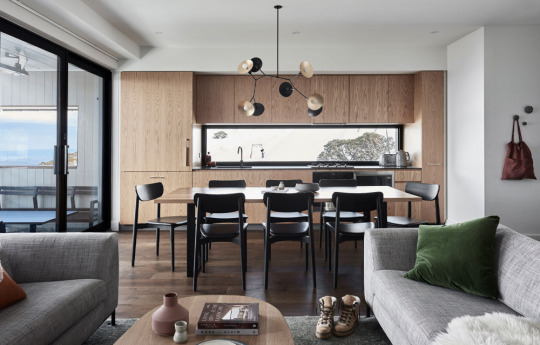
The absolutely exquisite Whitehorse Village accommodation. Photo – Eve Wilson for The Design Files. Styling – Caitlin Coghlan.

Snow luxury at Whitehorse Village! Photo – Eve Wilson for The Design Files.
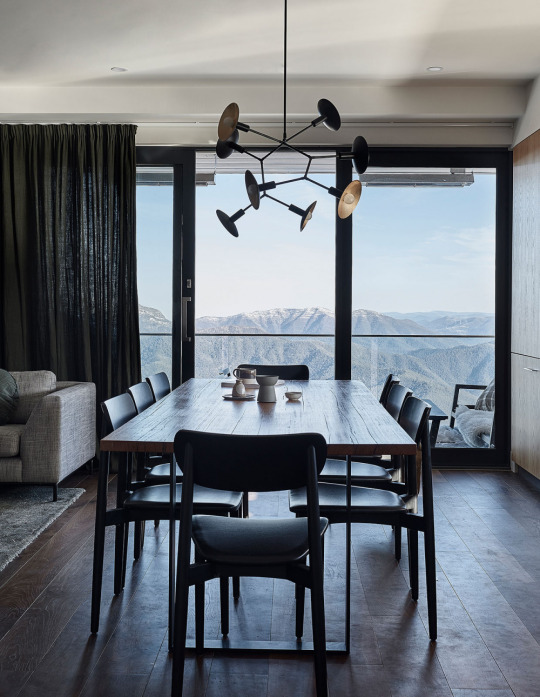
Unbelievable views from Chalet 5 at Whitehorse Village. Photo – Eve Wilson for The Design Files. Styling – Caitlin Coghlan.
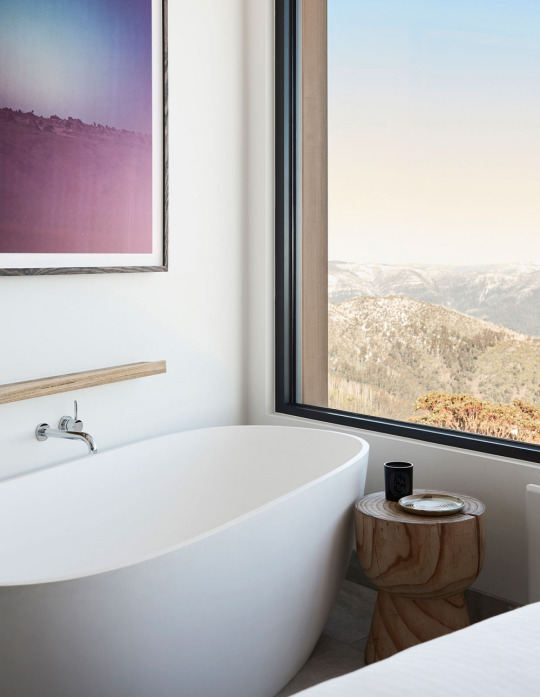
Bath with a view! Photo – Eve Wilson for The Design Files. Styling – Caitlin Coghlan.
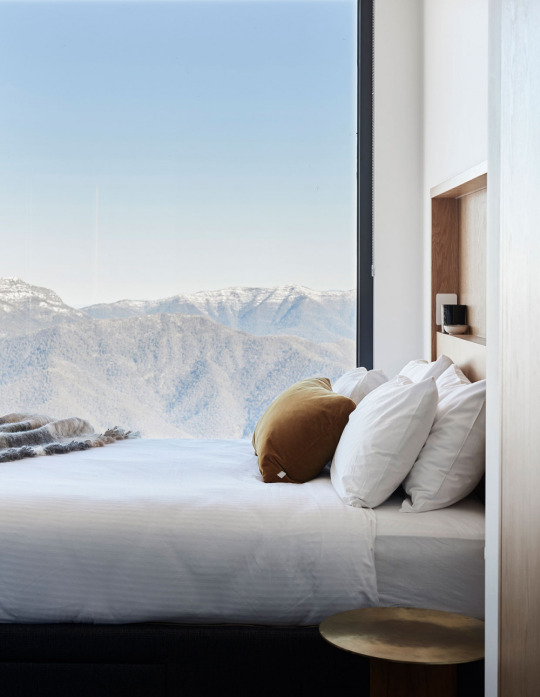
Room with a view! Photo – Eve Wilson for The Design Files. Styling – Caitlin Coghlan.
STAY
Chalet 5 Whitehorse Village Perched high in the Alpine Ranges, Chalet 5 at Whitehorse Village is a luxury hotel-inspired destination that is about as fabulous as it gets. Think high-end apartment, where the city meets the mountains. The luxury space is softened with textiles, books and objects. And I would be remiss not to mention the extraordinarily comfortable bed! My favourite parts included THE VIEW… the bedroom with a view… the bathroom with a view… and the proximity to the mountain. And did I say THE VIEW?
This dream accommodation is best suited to couples, families or small groups. We had four ladies there and it was super cosy to sit around in the evenings with some chocolate and a cuppa. Could not recommend more highly if you’re after an extra special snow escape!
Chalet 5, Whitehorse Village Whitehorse Village Road Mount Buller
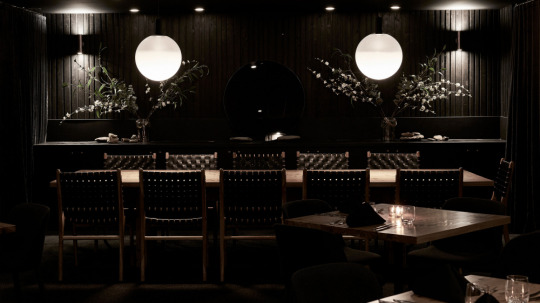
The handsome interiors at Black Cockatoo. Photo – Eve Wilson for The Design Files.
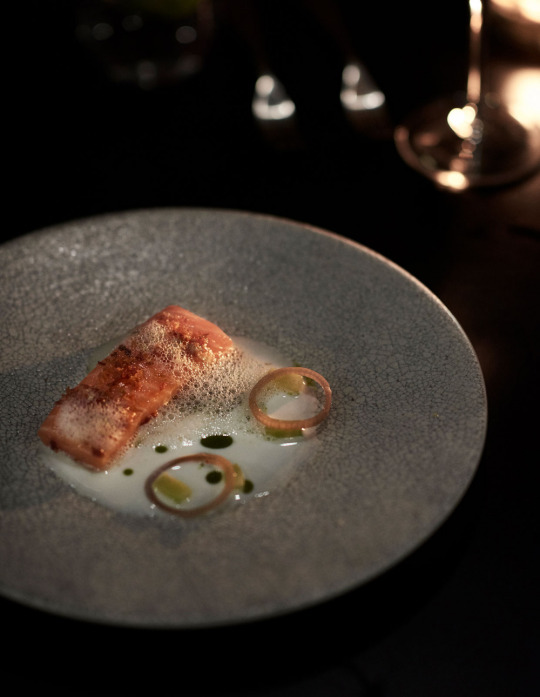
Fresh, seasonal produce at Black Cockatoo. Photo – Eve Wilson for The Design Files.
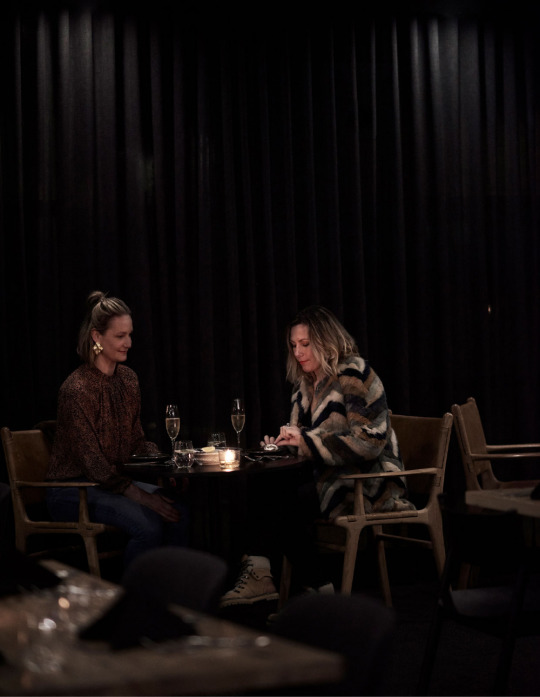
The perfect place for an après ski cocktail. Photo – Eve Wilson for The Design Files.
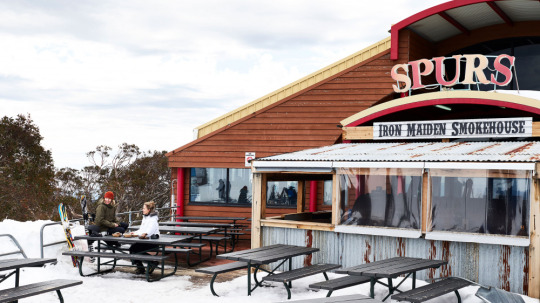
Spurs Iron Maiden Smokehouse located at the top of the Northside Express chairlifts. Photo – Eve Wilson for The Design Files.
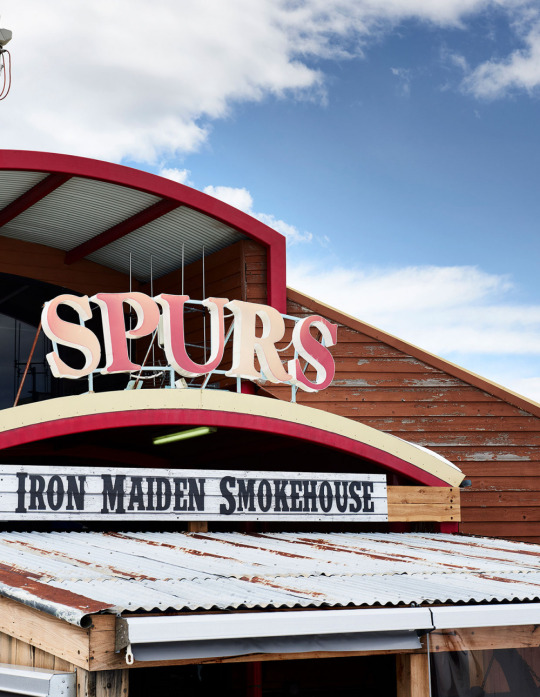
An added bonus to Spurs is warming up by the smoker! Photo – Eve Wilson for The Design Files.
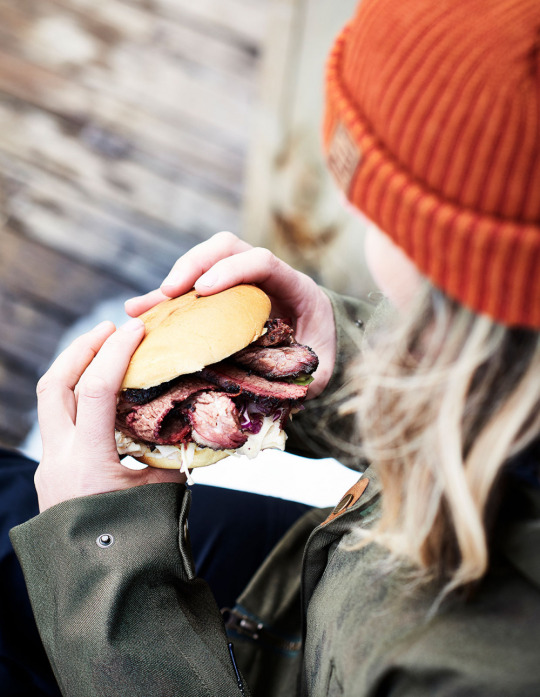
Brisket and pulled pork roll from Spurs. Photo – Eve Wilson for The Design Files.
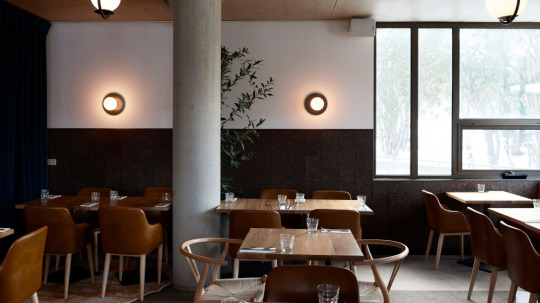
A chic fit-out at The Villager. Photo – Eve Wilson for The Design Files.
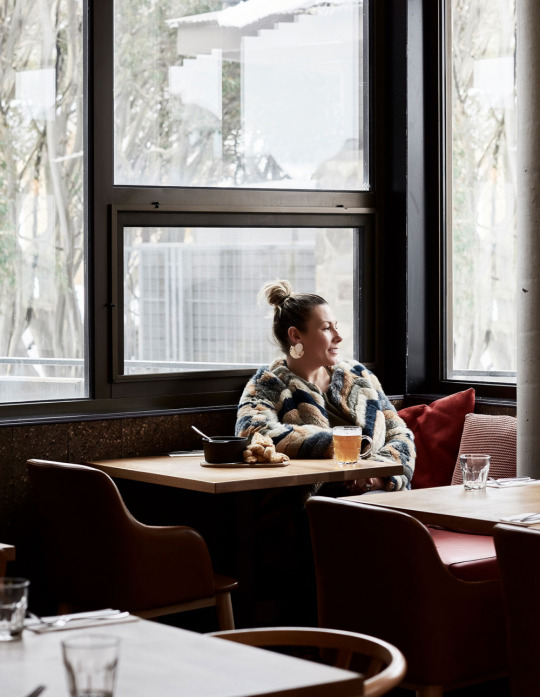
Simone with her cheese fondue and beer… is there anything better? Photo – Eve Wilson for The Design Files.
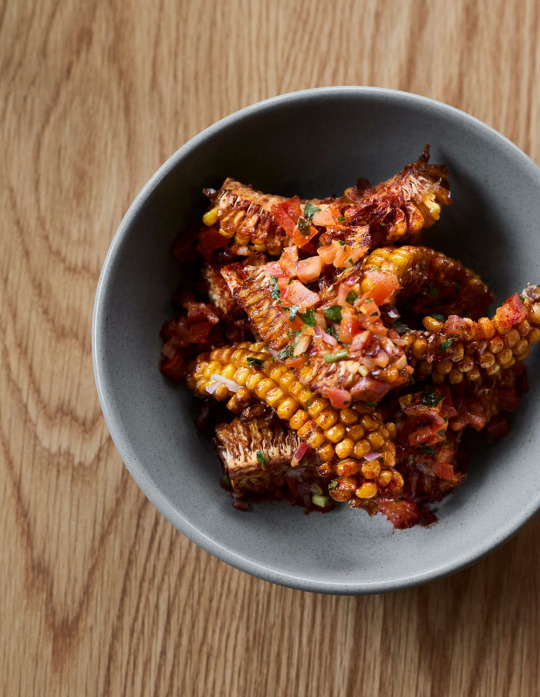
Corn ribs from The Villager. Photo – Eve Wilson for The Design Files.
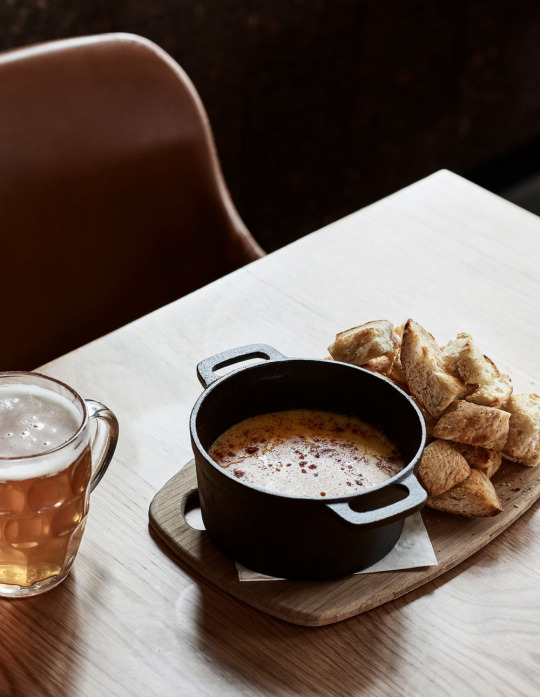
Cheese fondue and beer from The Villager. Photo – Eve Wilson for The Design Files.
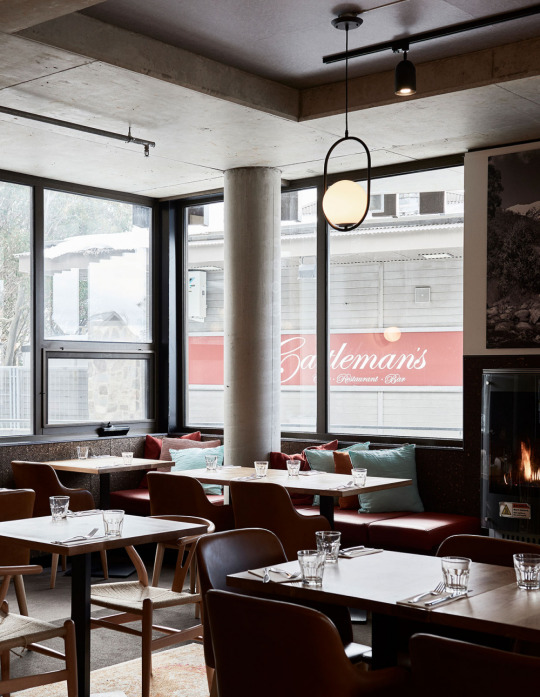
The Villager. Photo – Eve Wilson for The Design Files.
Eat + Drink
Black Cockatoo No day on the ski fields is complete without a reason to get changed and head out on the town – that’s how I met my husband after all! Black Cockatoo is an architecturally designed restaurant that is perfect for an apres-ski drink. The interiors are a handsome mix of raw copper, leather, wood and charcoal, paired with amazing views of Mount Stirling. It’s got a moody, Aussie alpine aesthetic that feels both comfortable and luxurious.
The sharing plates-style menu is filled with influences from all over the world, in a distinctly modern Australian style that makes the most of fresh produce and simple ingredients. The cocktails were ‘designer’ but most importantly, downright delicious. Bookings are essential for this hot spot!
Black Cockatoo 207 Summit Rd Mount Buller
Spurs Iron Maiden Smokehouse Situated at the top of the Northside Express chairlift, Spurs has one of the best views on the mountain. We were lucky enough to be ski-dooed over, VIP style! This American-style smokehouse is exactly what you want to eat for a hearty snack on the slopes. I had the brisket and pulled pork roll which was DELICIOUS – light yet filling, and something I wouldn’t do by myself at home. There’s also the added advantage of keeping warm by the smoker whilst you have your lunch!
Spurs Iron Maiden Smokehouse Top of Northside Express chairlift Mount Buller
The Villager A little hidden away, The Villager is a great bar/casual dining spot with super cool interior design. The substantial kitchen menu features small and large plates – I tried the fondue (what’s not to love about beer + cheese?) and corn ribs with tomato and lime salsa and smoked chilli dressing. Would recommend!
The Villager 2 The Avenue Mount Buller
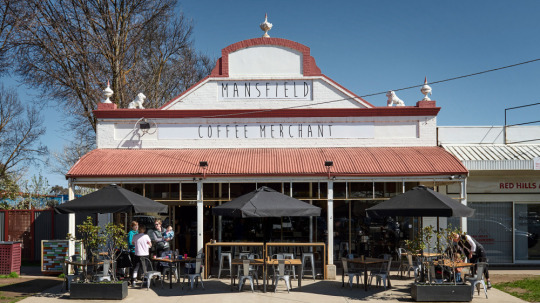
Mansfield Coffee Merchant in Mansfield. Photo – Eve Wilson for The Design Files.
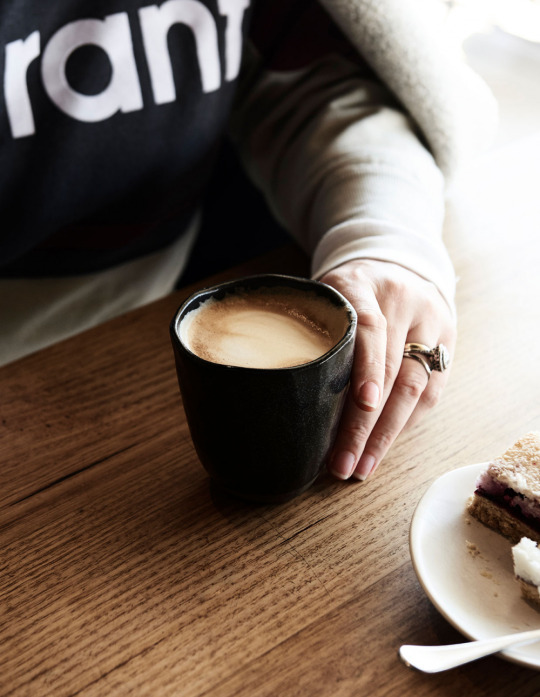
Simone’s coffee hot spot on the way up the mountain. Photo – Eve Wilson for The Design Files.
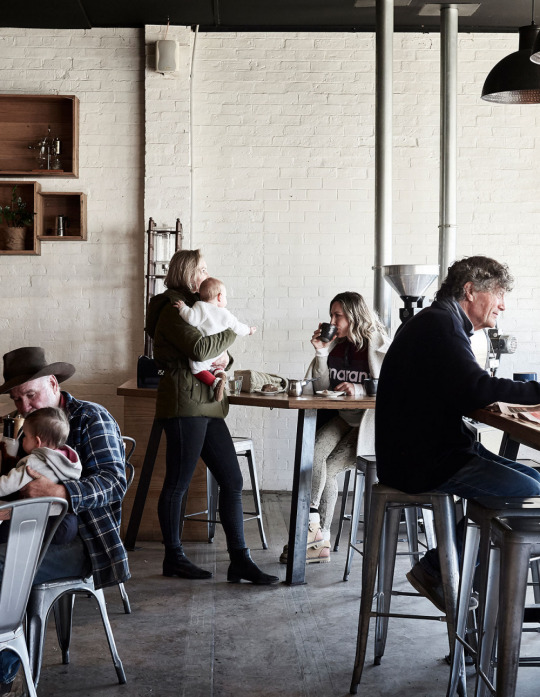
Locals chat and drink coffee at Mansfield Coffee Merchant. Photo – Eve Wilson for The Design Files.
Coffee
Mansfield Coffee Merchant A trip to the mountains generally involves a crack-of-dawn departure time, so a coffee spot on the way is a must. Now that we have bought land in that area – one must know where their daily coffee can be had – and the Mansfield Coffee Merchant is it. We got chatting with a really lovely older man while we were there, who told us he visited every day for coffee. During our conversation another fellow came up, who we assumed was his son, but it turned out it was just someone from the community who checked in daily with his older neighbour. This is what I mean about the community spirit here – it’s so wholesome!
Bustling, busy, efficient and cosy, I love to pop in for a little coffee and cake here on the drive up.
Mansfield Coffee Merchant 23 Highett St Mansfield
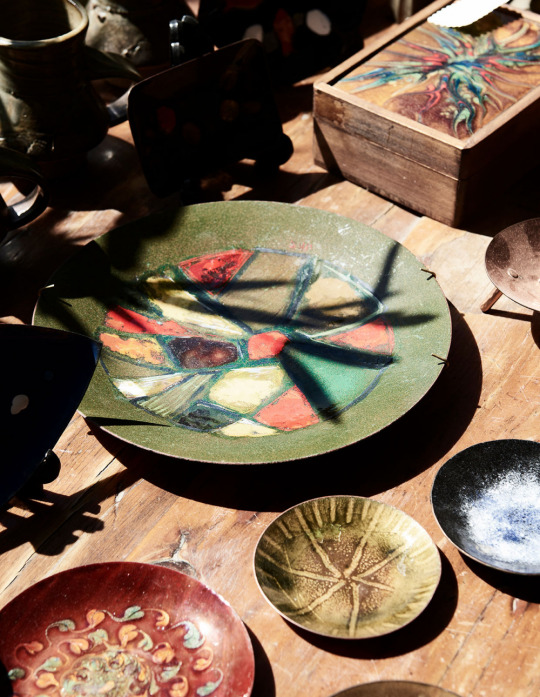
Treasures found at Vintage Traders Emporium. Photo – Eve Wilson for The Design Files.
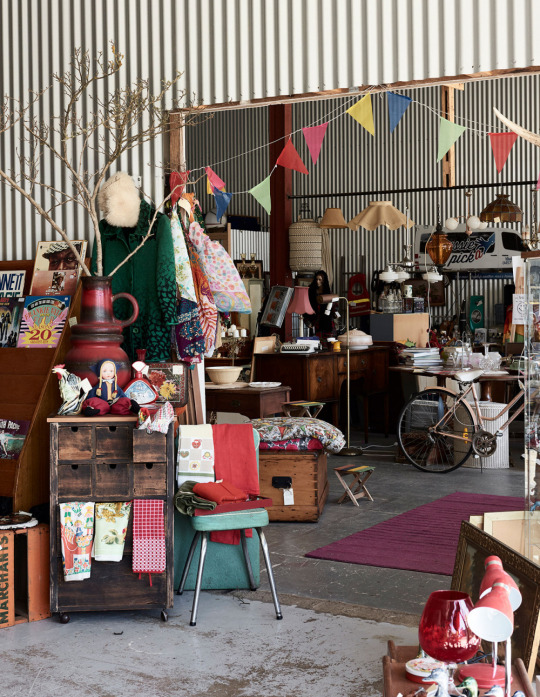
Vintage Traders Emporium in Mansfield. Photo – Eve Wilson for The Design Files.
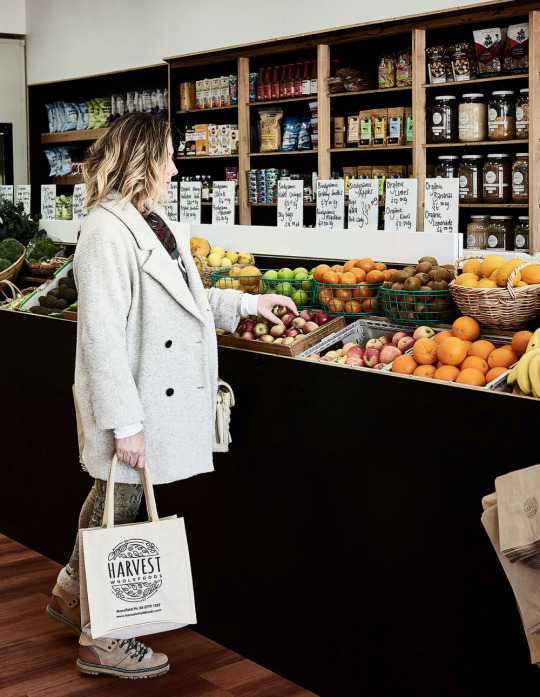
Harvest Wholefoods for healthy snacks and organic produce. Photo – Eve Wilson for The Design Files.
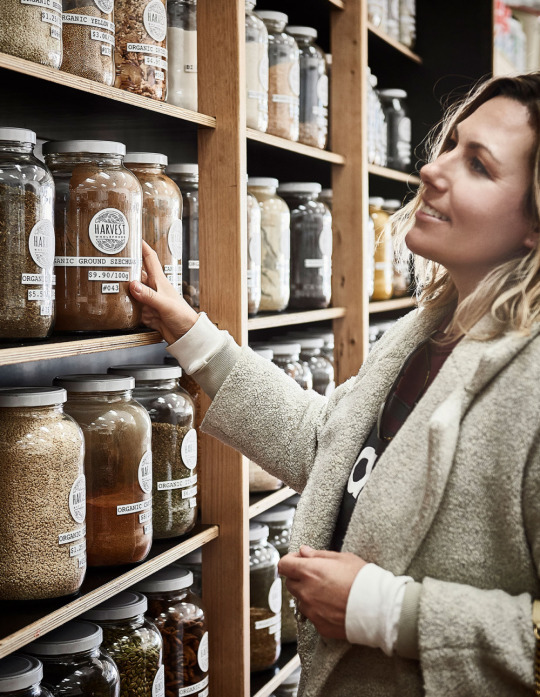
Simone shopping at Harvest Wholefoods. Photo – Eve Wilson for The Design Files.
Shop
Vintage Traders Emporium This massive warehouse in Mansfield is a vintage-lovers dream! Here you’ll find an amazing collection of vintage, retro, pre-loved and recycled pieces including miscellaneous bric-a-brac, fashion, ceramics, plants, local and homemade items. A real treasure hunt with heaps of space to roam – I left with a ceramic bowl and a cactus, to give you an idea of the variety found here!
Vintage Traders Emporium 10 Crosbys Ln Mansfield
Harvest Wholefoods A great little health food store and organic grocer to stock up on delicious, healthy snacks on your way up to the mountain.
Harvest Wholefoods 19/20 Highett St Mansfield
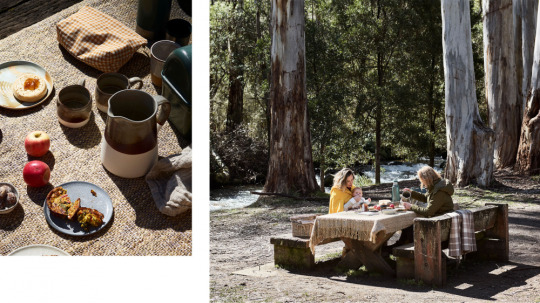
BYO picnic by the picturesque Delatite River in Mirimbah Park. Photo – Eve Wilson for The Design Files. Styling – Caitlin Coghlan.
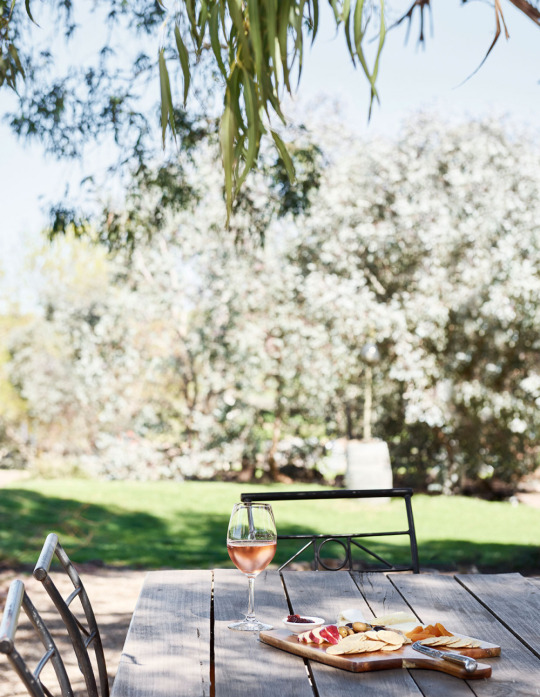
Delatite Winery (kitchen closed until further notice). Photo – Eve Wilson for The Design Files.
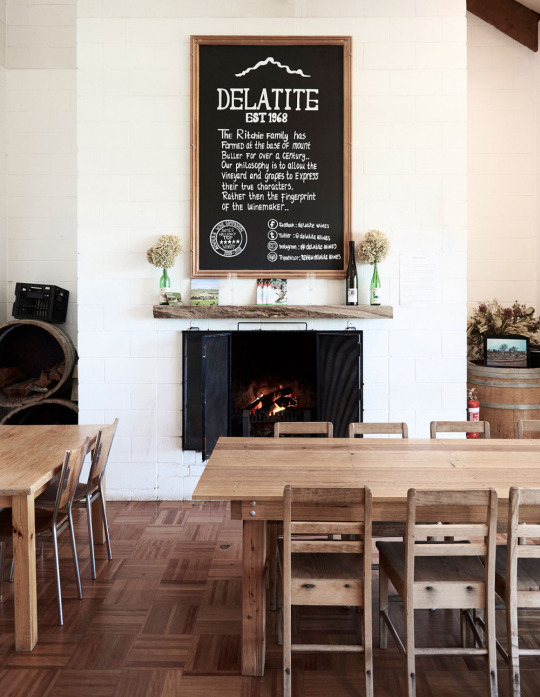
The Cellar Door at Delatite Winery (kitchen closed until further notice). Photo – Eve Wilson for The Design Files.
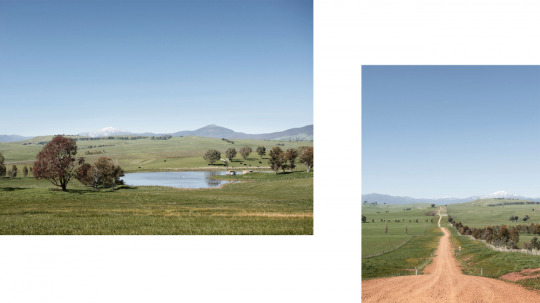
The beautiful Mansfield region. Photo – Eve Wilson for The Design Files.
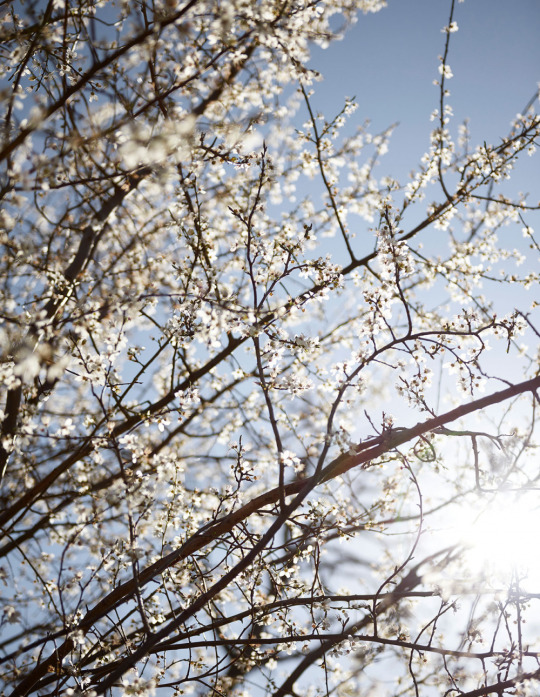
Winter sunshine. Photo – Eve Wilson for The Design Files.
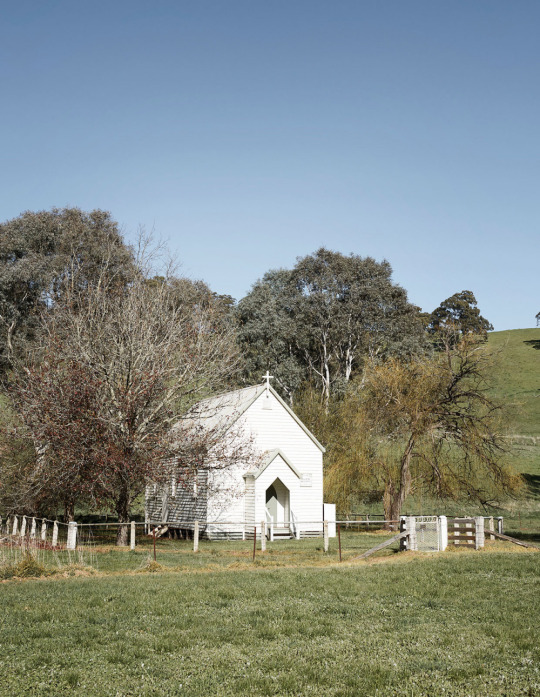
A small church in the Mansfield region. Photo – Eve Wilson for The Design Files.
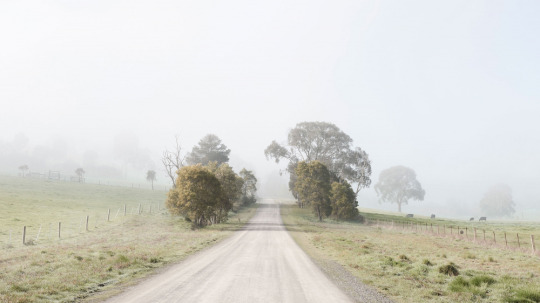
Misty Mansfield roads. Photo – Eve Wilson for The Design Files.
Do
Picinic at Mirimbah Park Positioned on the gorgeous Delatite River is Mirimbah Park – an idyllic spot for a BYO picnic on your way up or back from the mountain! There’s also a playground nearby to occupy the kids. The perfect activity for a sunny afternoon.
Delatite Wines Located on a picturesque rise at the base of Mt Buller, Delatite Winery enjoys spectacular views over the vineyards towards the mountain. The small family-run winery was established in 1982, and these days enjoys a lovely little Cellar Door with a roaring fire where you can snack on grazing boards. Although the Cellar Door kitchen is currently closed due to COVID-19, the retail wine shop is open for business!
Delatite Wines Cnr Stoneys Rd & Pollards Rd, Mansfield
0 notes
Text
COVID-19 diaries from Wuhan: What future after the pandemic?
Register at https://mignation.com . The Only Social Network for Migrants. ---
New Post has been published on http://khalilhumam.com/covid-19-diaries-from-wuhan-what-future-after-the-pandemic/
COVID-19 diaries from Wuhan: What future after the pandemic?
The rules keep changing, leaving people feeling insecure and restless
A barber came to the residential district to do haircuts for the men in the community. (Photo credit: Guo Jing. Used with permission)
The following post is the twelfth in a series of diaries written by independent filmmaker and feminist scholar Ai Xiaoming and feminist activist Guo Jing. Both are living in Wuhan at the initial center of the COVID-19 pandemic. Here are the links to the first, second, third, fourth, fifth, sixth, seventh, eighth, ninth, tenth and eleventh parts of the series. Check out Global Voices’ special coverage of the global impact of COVID-19. This instalment was written between March 15 and March 19, 2020. The original Chinese diaries are published on Matter News.
Ai Xiaoming: March 15, 2020
早上起来,打开冰箱,手在饺子那里停了一会儿。春节前夕,老家的侄儿儿媳给我们姐弟两家包了一千个饺子送来。家里阿姨回乡过年前也包了上百个饺子留下。这些饺子,现在只剩了二、三十个。按理,我吃掉也没有关系。但是,弟妹带着孩子回来,就尝不到亲情饺子了。 衣食无忧如我,也会叹饺子所剩无几;由此想到一些小视频里出现的居民生活匮乏的场景。��的老人不会团购,听说社区要送菜,坐在家门���等了一整天,然后失望地告诉外地子女,今天没有等到菜。 每次经历了大灾难和生死劫,我们这里,都有两种力量的角力。一种是强化和坚持我们对于权利和尊严的珍视,另一种是降低标准,每过一劫降一次。这样,灾难节节长,受难者把苟活当幸运。疫情过后,我们注定会庆幸自己的存在;但整个社会将提升对生命和权利的尊重,还是放弃或拉低了它的标准?目前各地都有以防疫为名侵犯公民权利,以及对弱者缺乏保护的情形。大难不死很可能留下长久的负面遗产,那就是满足于苟活且放任自私自利,以邻为壑。
This morning when I opened my refrigerator looking for food, my hand stopped at dumplings. Before Chinese New Year, my cousin and his wife prepared 1,000 dumplings for me and my brother and our helper also left me several hundred dumplings before she went home for the holiday break. Now I only have 20-30 dumplings left. I could finish all these dumplings. But then, if my brother’s wife and her children were to visit me, they wouldn't be able to enjoy these hand-made delicacies. Carefree as I am, I still feel worried about having not enough dumplings. This reminds me of some video clips showing how some were deprived of food. Some elderly people who don't know how to join groups to buy online — they would sit outside their house, waiting for community workers to deliver vegetables. Quite often at the end of the day, they would tell their children in other cities that they did not get any vegetables. Whenever people go through a disaster or a traumatic experience, they struggle between whether they should be persistent in defending their rights and dignity, or give up their principles. In the latter case, we give up some of our principles each time we experience a disaster. After a few disasters, the victims may consider mere survival fortunate. After this pandemic, we will probably feel lucky to be alive. But what of our society as a whole? Will it have more respect for human life and rights? Will it give up its fundamental principles? Recently, we have observed a lot of pandemic control measures that violate human rights. The weak are unprotected. Surviving a disaster may result in a long-lasting negative impact, such as satisfaction with mere survival and the consolidation of individual selfishness and interest at the expense of others.
Guo Jing: March 15, 2020
今天的阳光依然很好,连续几天天气都很好,春天似乎真的来了。一个城就这样从冬天封到了春天。 今天有人在群里发了最新的无疫情小区名单,我们小区终于上榜了。大家又关心起社区别的小区有没有上榜。下午,小区门口贴了“无疫情小区”的牌子,物业主任拍照发到了群里,大家又是点赞,又是鼓掌,又是感谢。
It was sunny today. We have had several sunny days in a row. It seems that spring has arrived. This city has been locked down from winter until spring. Today someone in our chatroom posted an updated list of zero confirmed case communities, and our community is finally on the list. We also checked on other communities in our area. In the afternoon, a sign reading “zero-confirmed case community” was posted at the gates of our district. The director of property management took a photo and sent it to our chatroom. We ‘like’ the photo, applaud, and feel thankful.
Guo Jing: March 16, 2020
前几天有网友曝光了医护人员在疫情期间拿到的工资反而比平时少。这是因为医护人员平时的收入除了基本工资,还有绩效奖金,而疫情期间医院只发基本工资加补贴,有些人的工资反而少了。
Several days ago, some netizens revealed that medical staff received a smaller salary during the pandemic than usual. Medical workers usually receive basic salary plus bonus, but hospitals only paid them basic salary plus subsidy during the pandemic. As a result, some of them received less money than what they usually earn.
Guo Jing: March 17, 2020
湖北一些地方解封也有几天了,可是朝令夕改的现象却让人摸不着头脑。昨天群里有个麻城的朋友说:“麻城明天又要封城了”,有人问:“为什么啊”,这人也不知道,说是村里刚发的通知,还艾特了大家,说:“政策有变,高速明天早上九点将禁止通行,办理了通行证的请抓紧时间返岗”。大家都紧张起来了,让有通行证的人���紧走。 有个湖北的朋友小区解封了几天后,突然有一天,她的家人不知从哪里收到的消息,说是不让说的秘密消息,据说他们市要再封城,她和家人赶快去囤了一些米、油之类的食物,结果几个小时后又有人说再次封城的消息是谣言。 朝令夕改会让政府失去公信力,也会让人们没有安全感,无所适从。
Some regions in Hubei Province have lifted the lockdown for several days. However, the rules keep changing and people are confused. Yesterday a person from Macheng city said in our chatroom, “Macheng will be locked down again tomorrow.” Another person asked why, but that person did not know the reason. She just said that they received a notice from the village office, which said: “The policy has changed. The highway will be closed tomorrow 9 AM. If you have a pass [permission to leave the city], please leave and return to work ASAP.” People were very anxious and urged those with a pass to leave. Another friend from Hubei said her family heard from an anonymous source that their city would be locked down again. The message was circulated a few days after the city was unlocked. She and her family ran to buy some rice, oil, and some food. Then a few hours later, they were told the message was only a rumor. The policy keeps changing, and the government is not a credible source anymore. People are insecure and restless.
A kid looked outside from a window. (Photo credit: Guo Jing. Used with permission.)
Guo Jing: March 18, 2020
有人说:“武汉的情况在好转”,武汉的疫情确实在好转,可是疫情引发的隔离、恐慌、牺牲、创伤是否在好转呢?新冠肺炎会给一些病人带来身体的后遗症,还会造成在武汉的人的心理后遗症,这需要多久才能好起来呢? 布鲁克林创伤中心的创始人巴塞尔·范德考克博士讲到创伤的时候曾指出,经历911的人们受到的创伤相对较小。他提到三个重要的影响因素:行动、关注、讲述。 行动”是指灾难发生的时候人们可以行动…“关注”是指911事件获得了全世界的关注…“讲述”则是人们能够去谈论自己的遭遇,更不会因为讲述而被指责。 这次疫情中,从封城到封小区,我们的行动空间却在逐步缩小,我们被困住。就关注而言,武汉确实获得了全世界的关注,可是人们的支持一度被阻断,医生不经医院允许不得向社会求助,志愿组织的医疗物资被官派机构所拦截。很多关注难以���化为实际的帮助。关于讲述,一些讲述在被封杀,很多网友纷纷准备了微博的备用号。 当悲剧接连发生,真话被当作谣言,“正能量”却被鼓吹。悲剧得到的社会关注遭到限制,问责得不到回应,人们的情绪就会慢慢地被消耗,愤怒在消失,无力在增强。
Someone said “the condition in Wuhan is improving.” The pandemic in Wuhan is indeed under control. However, what about the panic, sacrifice, isolation, trauma and sufferings related to the pandemic? Have these been healed? COVID-19 has wrought both physical and psychological damage. How long will it take for people to get healed? When Dr. Bessel van der Kolk, the founder of the Trauma Center in Brooklyn, talked about psychological trauma, he pointed out that those who experienced 911 had less trauma than others. There are three factors mitigating psychological trauma: Action, Care, and Storytelling. “Action” means people could act when a disaster happened… “Care” means the September 11 attack had caught the world's attention… “Storytelling” means people could talk about their experience and they wouldn't be blamed for doing so. In this pandemic, the space for us to take action has been diminishing ever since the lockdown extended from the city to residential districts. We are trapped. Considering “care”, Wuhan has caught the world's attention, but aid from the outside was once blocked from entering — medical workers were forbidden to reach out for help without the approval of hospital authorities and medical supplies of volunteer groups were intercepted by government-designated organizations. People's attention was not transformed into action. Regarding “storytelling”, some of our stories were censored and many have to prepare backup accounts on Weibo. In the face of tragedies, true stories are labelled as rumors while “positive energy” is promoted. When public attention toward tragedies is restricted and people's demands for official accountability go unanswered, emotions gradually get eroded and anger is overtaken by a sense of helplessness.
Guo Jing: March 19, 2020
武汉今天新增病例为0,这信息可信吗? 11点多,物业的工作人员在群里发消息说:“大家好,我们联系了理发师师傅,有需要的业主,可下来理发,每人20元。”马上就有男人到物业办公室的门口��起来头发,有四五个男人还排起了队。 我前几天问一个律师有没有接到疫情期间的家暴受害者的求助。她今天告诉我,听当地妇联讲有个单亲妈妈打死了自己的孩子。朋友说可能是生存压力太大了,没有收入,因为封锁也不能出门,各种因素夹杂在一起导致了悲剧的发生。 可怕的是,她听说不止一个这样的惨剧。孩子死了,妈妈会被判刑。孩子很可怜,可我们也不能一味地指责妈妈,因为这是一个社会性的悲剧。
Wuhan has zero confirmed cases today. Is this information reliable? Today at around 11 AM, the staff in the property management office announced in our chatroom, “Hello, we asked a barber to come to our community. If any of you want to have a haircut, please come. The cost is RMB 20 yuan (US$ 2.83 dollars) per person.” One man went to the estate management office immediately, and soon there were 4-5 men in the line. Several days ago, I asked a lawyer whether she received help messages from victims of domestic violence during the pandemic. She told me today that the local branch of the All-China Women’s Federation told her that a single mom had beaten her child to death. She said maybe the mom was too stressed, maybe she did not have any income, or maybe she felt trapped during the lockdown — all these factors combined led to the tragedy. What's more horrible is that this is not the only tragedy she heard of. A child is dead and a mom will be sentenced. The story of the child is pitiful but we cannot just blame the mom. It is a social tragedy.
< p class='gv-rss-footer'>Written by Winston Chiu · comments (0) Donate · Share this: twitter facebook reddit
0 notes